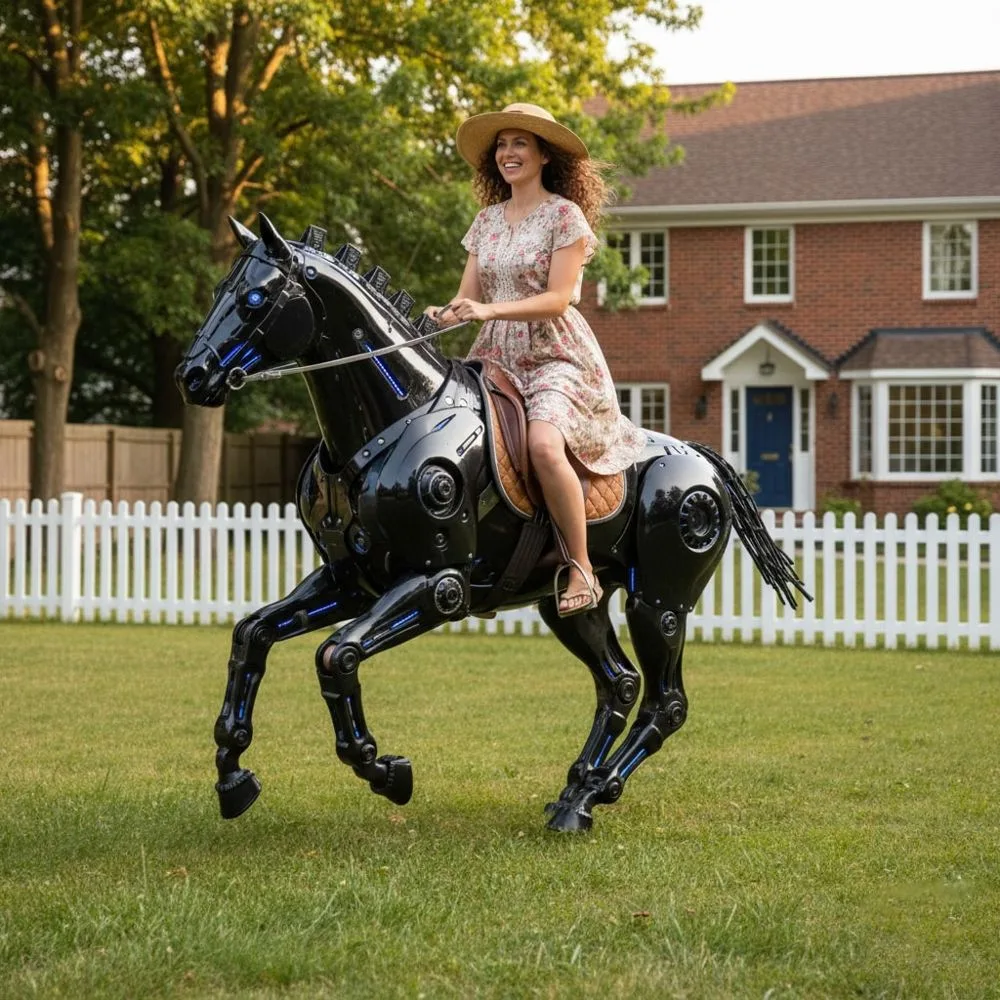The concept of an electric horse might sound like something straight out of a science fiction novel, but this innovative technology has become a fascinating reality that bridges centuries of equestrian tradition with cutting edge engineering. From therapeutic applications to professional training tools, the electric horse represents a remarkable evolution in how we interact with and learn from these magnificent creatures without necessarily requiring a living, breathing animal.
Understanding the Electric Horse Phenomenon
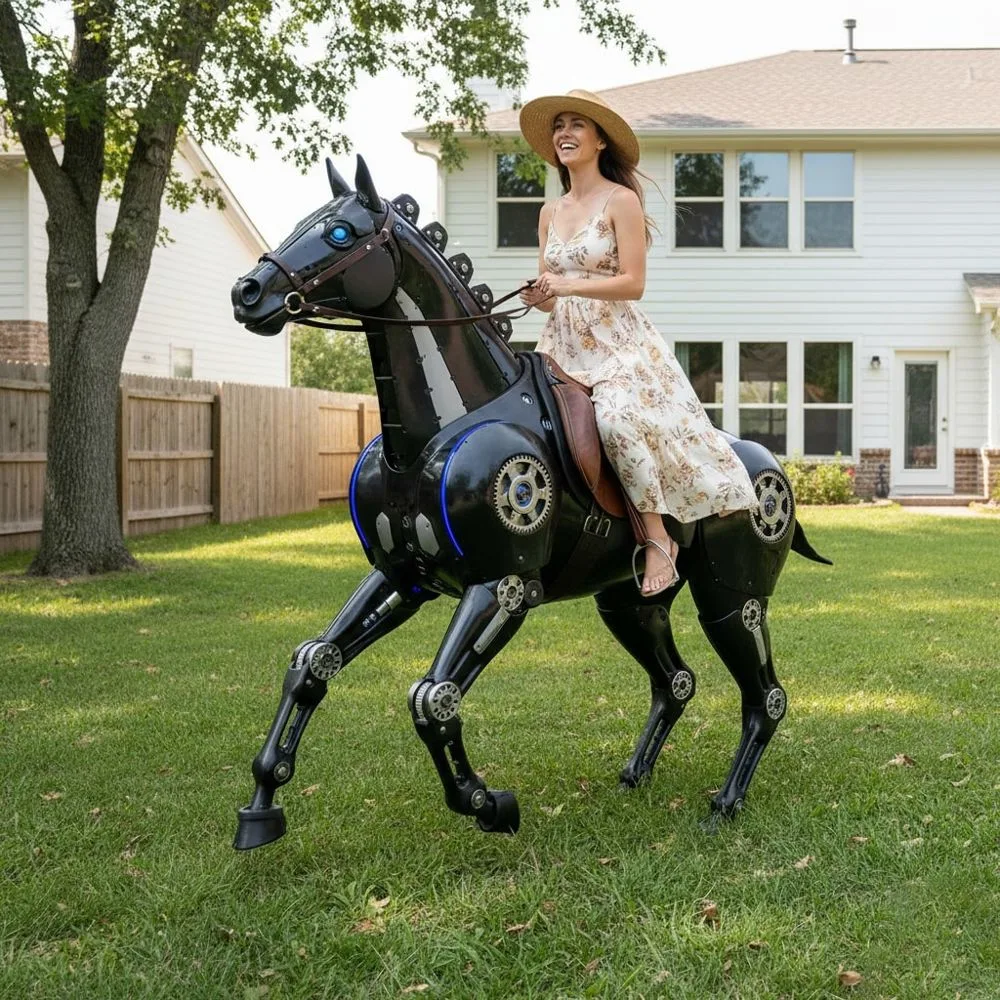
An electric horse is essentially a sophisticated mechanical or robotic device designed to simulate the movement, behavior, and riding experience of a real horse. These technological marvels range from simple rocking mechanisms to incredibly advanced robots equipped with artificial intelligence, sensors, and responsive movement systems that can replicate nearly every aspect of horseback riding.
The technology behind these mechanical equines has evolved dramatically over the past decade. Modern electric horse simulators incorporate hydraulic systems, advanced motors, and computer programming that allows them to mimic various gaits including walking, trotting, cantering, and galloping. Some premium models even respond to rider input just as a real horse would, creating an incredibly immersive experience.
What makes the electric horse particularly revolutionary is its accessibility. Traditional horseback riding requires significant resources including stable facilities, ongoing animal care, veterinary services, and substantial time commitments. The electric alternative eliminates these barriers while still providing many of the physical and psychological benefits associated with equestrian activities.
The Therapeutic Revolution of Electric Horse Technology
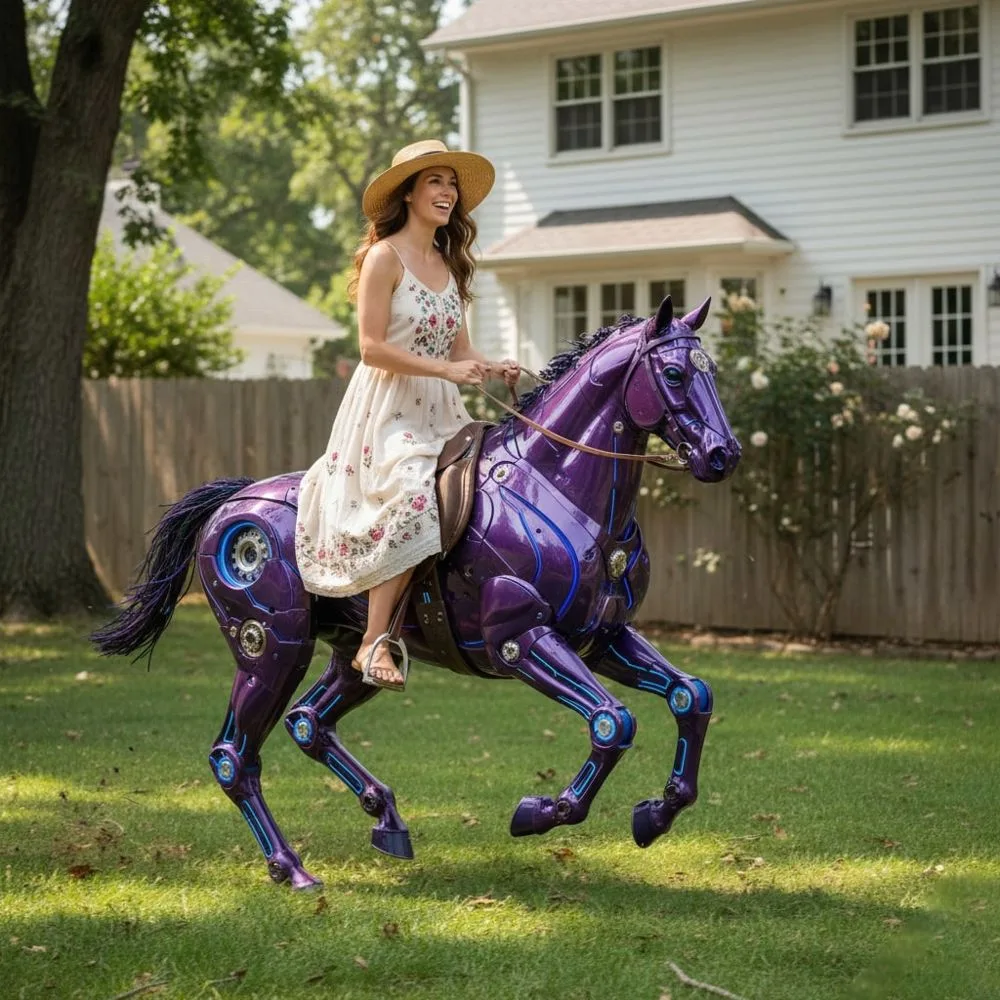
One of the most profound applications of the electric horse lies in therapeutic settings. Hippotherapy, or equine assisted therapy, has long been recognized for its remarkable benefits in treating various physical, cognitive, and emotional conditions. However, access to therapeutic riding programs has traditionally been limited by factors such as availability of trained therapy horses, weather conditions, insurance concerns, and geographical constraints.
Electric horse simulators are transforming this landscape entirely. Physical therapists and occupational therapists now use these devices to provide consistent, controlled therapeutic experiences for patients with conditions ranging from cerebral palsy to autism spectrum disorders, from stroke recovery to balance disorders.
The therapeutic electric horse offers several distinct advantages over traditional hippotherapy. Therapists can precisely control the speed, gait pattern, and intensity of movement, allowing for customized treatment protocols tailored to each patient’s specific needs and progress. The consistency of movement patterns helps patients develop muscle memory and motor skills more effectively than might be possible with a living horse whose movements naturally vary.
Furthermore, these simulators provide a safer environment for patients who might be anxious around large animals or who have immune system vulnerabilities that make contact with animals risky. The therapy can continue regardless of weather conditions, and sessions can be scheduled with complete flexibility without concern for animal welfare or fatigue.
Research studies have documented impressive outcomes from electric horse therapy. Patients show improvements in core strength, balance, coordination, and posture. Children with developmental delays demonstrate enhanced social skills and confidence. Adults recovering from neurological injuries report better motor control and spatial awareness.
Professional Training and the Electric Horse Advantage
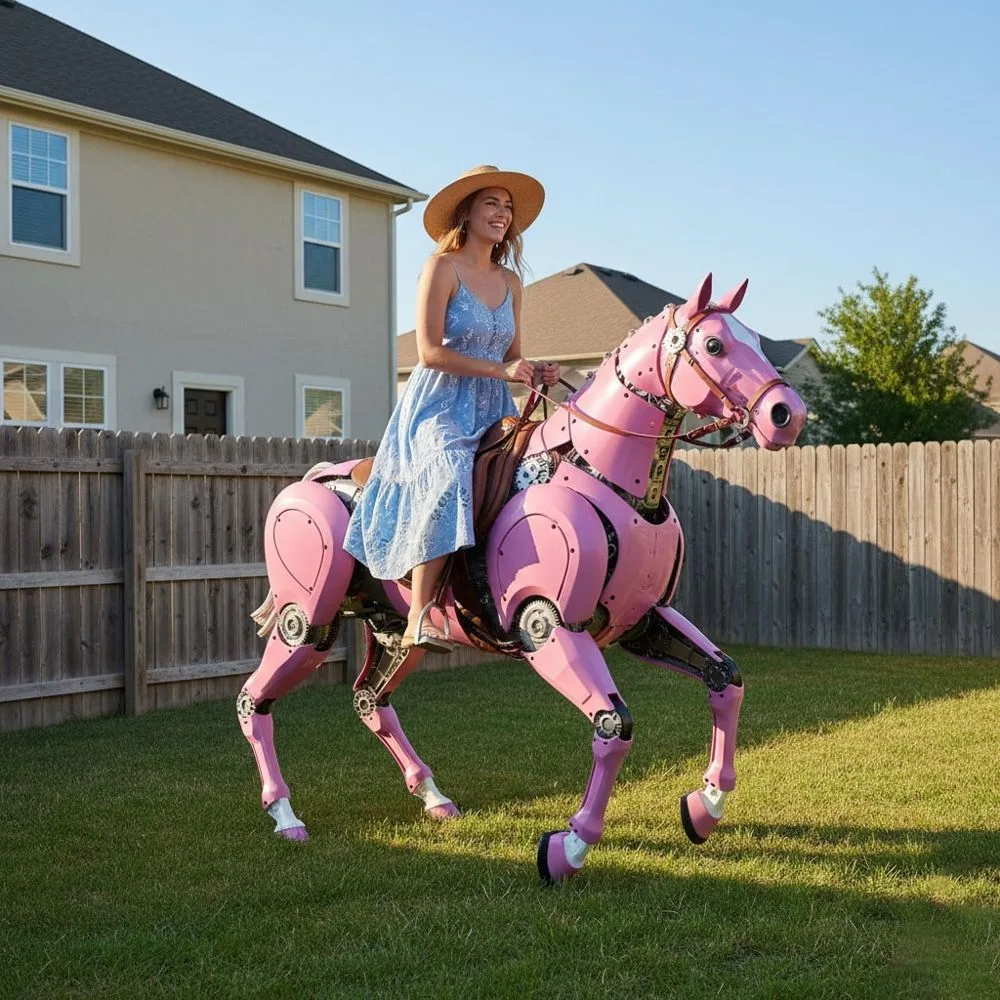
Professional equestrians and riding instructors have embraced electric horse technology as an invaluable training tool. For riders preparing for competitions, these simulators offer a way to refine technique, build stamina, and practice specific skills without putting additional stress on their live horses.
Elite level riders use electric horse simulators to maintain their fitness during off seasons or when traveling for competitions. The ability to simulate different horse temperaments and riding scenarios makes these devices particularly valuable for practicing responses to challenging situations in a completely safe environment.
Riding schools and equestrian centers increasingly incorporate electric horse technology into their beginner programs. New riders can develop basic skills, overcome initial fears, and learn proper posture and balance before ever mounting a live animal. This progression not only enhances safety but also leads to more confident, skilled riders who progress more quickly when they do begin working with real horses.
The electric horse also serves as an excellent tool for instructor training and certification programs. Aspiring riding instructors can practice teaching techniques, learn to identify common postural problems, and develop their coaching skills using the simulator before working with actual students and horses.
Entertainment and Public Engagement
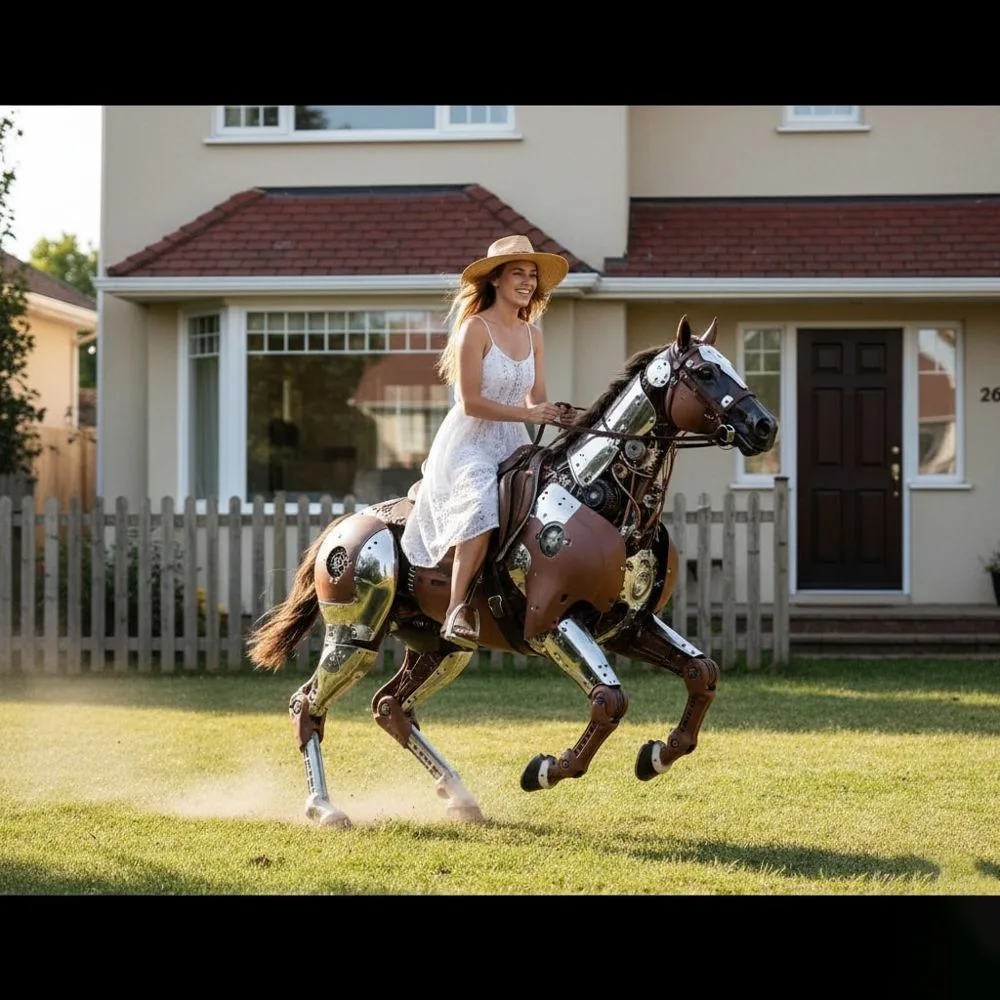
Beyond therapeutic and training applications, the electric horse has found an enthusiastic audience in entertainment venues, shopping centers, and tourist attractions. These installations range from simple coin operated rides for children to sophisticated virtual reality experiences that transport riders through immersive digital landscapes.
Theme parks and entertainment centers have begun incorporating advanced electric horse attractions that combine realistic motion simulation with projection mapping, surround sound, and even environmental effects like wind and temperature changes. Riders can experience everything from gentle trail rides through virtual forests to heart pounding cavalry charges across historical battlefields.
Shopping malls and family entertainment centers often feature electric horse rides as attractions that appeal to children while giving parents a moment to rest. These installations have evolved far beyond the simple mechanical horses of previous generations, now offering interactive experiences with sound effects, movement patterns, and even educational content about horse care and riding.
Virtual reality integration represents the next frontier for entertainment focused electric horse technology. Riders don VR headsets while mounted on responsive simulators, allowing them to explore fantastical worlds, compete in virtual races, or simply enjoy the sensation of riding through beautiful landscapes that would be impossible or impractical to visit in reality.
The Technology Behind the Magic
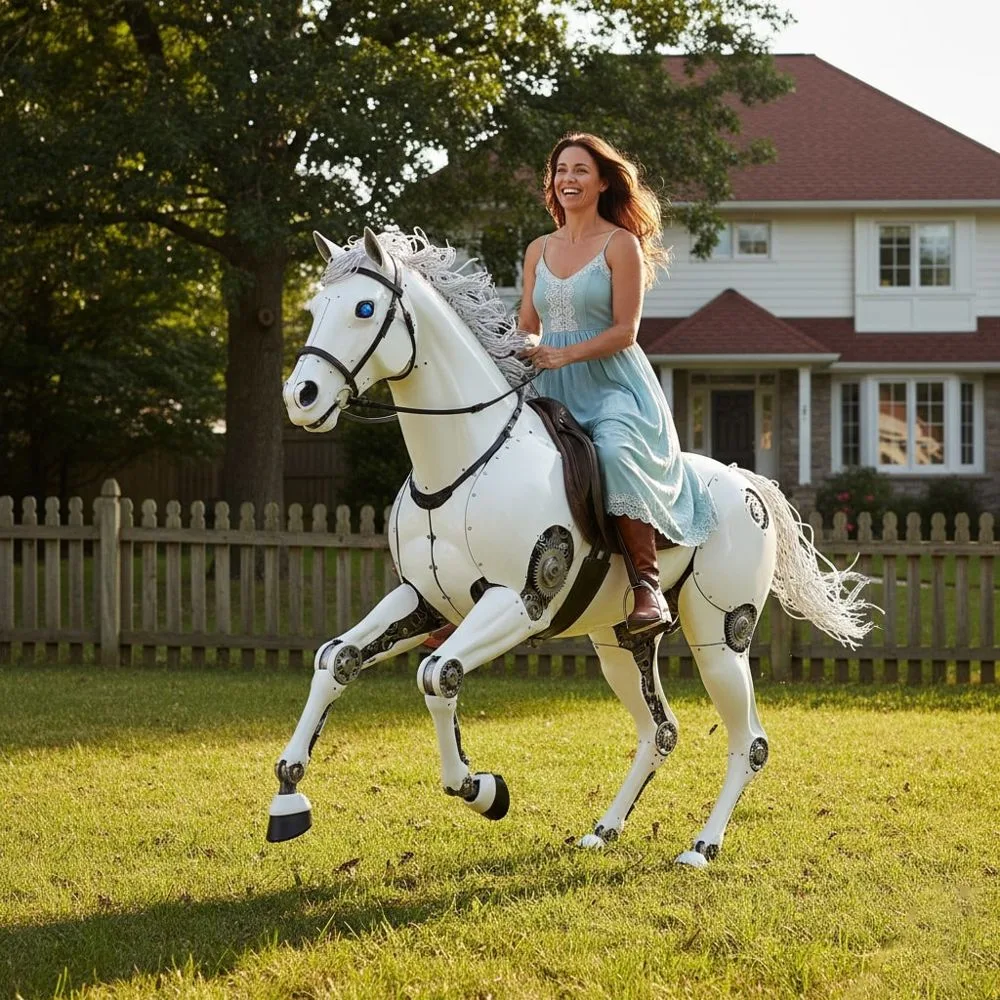
Understanding what makes an electric horse function reveals the impressive engineering involved in creating these devices. At the heart of most systems lies a combination of electric motors, hydraulic actuators, or pneumatic systems that generate movement. Advanced models incorporate dozens of individual actuators that work in concert to recreate the complex biomechanics of equine locomotion.
Sensors play a crucial role in responsive electric horse systems. Pressure sensors in the saddle and stirrups detect rider weight distribution and subtle shifts in balance. Some models include reins equipped with force sensors that register pulling pressure, allowing the system to respond appropriately just as a real horse would to rein cues.
The control systems managing these various components have become increasingly sophisticated. Modern electric horses often feature touchscreen interfaces that allow operators to select different programs, adjust difficulty levels, and customize the experience. Some therapeutic models include detailed data collection capabilities that track patient progress over time, providing valuable metrics for treatment planning.
Artificial intelligence is beginning to make its way into premium electric horse systems. These smart simulators can adapt their behavior based on rider skill level, gradually increasing challenge as the rider improves. They can also provide real time feedback on riding form, alerting riders to postural problems or technique issues through visual displays or audio cues.
Environmental and Ethical Considerations

The rise of electric horse technology intersects with broader conversations about animal welfare and environmental sustainability. While nothing can truly replace the bond between human and horse, these mechanical alternatives do offer some compelling advantages from ethical and ecological perspectives.
Traditional horse ownership carries significant environmental costs including land use for grazing and hay production, water consumption, and methane emissions. A single horse requires several acres of pasture or substantial feed purchases, along with ongoing veterinary care and waste management. Electric alternatives eliminate these environmental impacts while still providing many benefits associated with equestrian activities.
From an animal welfare standpoint, electric horses never experience fatigue, discomfort, or stress. They require no breaking or training processes that some animal advocates find concerning. For therapeutic applications particularly, the use of simulators means no horses are subjected to the repetitive physical demands of therapy work, which can lead to musculoskeletal problems over time.
However, proponents of traditional horsemanship rightly note that the electric horse cannot replicate the emotional connection and relationship building that occurs between humans and living horses. The therapeutic benefits of this interspecies bond, the responsibility learned through animal care, and the joy of working with a sentient being all remain unique to experiences with real horses.
The Future of Electric Horse Innovation
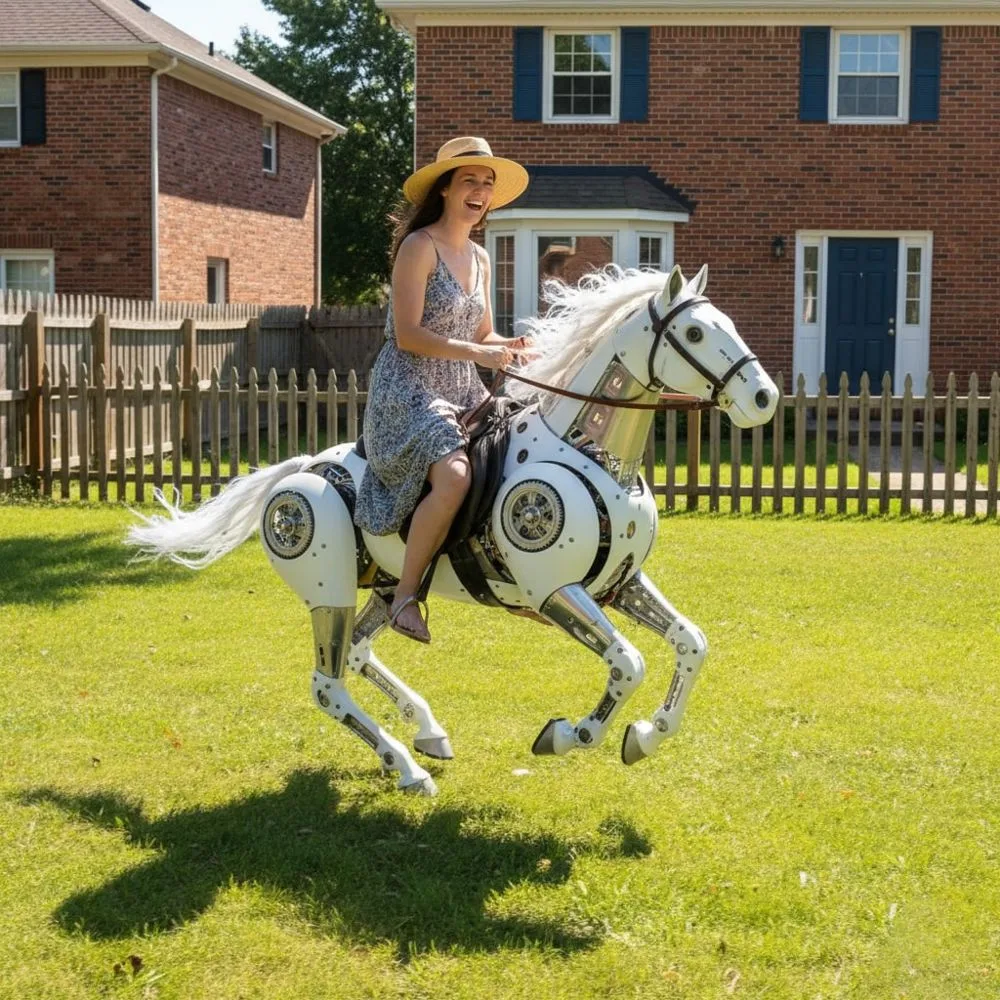
As technology continues advancing at a rapid pace, the capabilities and applications of electric horses will undoubtedly expand. Researchers are exploring haptic feedback systems that could allow riders to feel simulated muscle movement beneath them, further enhancing realism. Improved AI systems may create electric horses that exhibit personality traits and learned behaviors, building elements of relationship and unpredictability that currently distinguish living horses.
Integration with fitness tracking technology and health monitoring systems could transform electric horses into comprehensive wellness tools. Riders might track their workout intensity, calories burned, and technique improvements through connected smartphone applications, gamifying the experience and encouraging consistent practice.
The potential for remote riding experiences represents another exciting frontier. Imagine connecting with an electric horse simulator while controlling a camera equipped robotic device in a distant location, allowing you to experience trail rides through exotic locations from the comfort of a local facility. Such applications could revolutionize tourism and provide unprecedented access to natural wonders.
Educational applications continue expanding as schools and universities recognize the value of electric horse technology for teaching biomechanics, veterinary concepts, and therapeutic techniques without the logistical challenges of maintaining live animals on campus.
Bringing Innovation and Tradition Together
The electric horse phenomenon illustrates how technology can honor and extend tradition rather than simply replacing it. These innovations make equestrian experiences accessible to people who might never otherwise have the opportunity to ride, whether due to physical limitations, financial constraints, geographical isolation, or simple lack of access to horses and facilities.
For therapeutic communities, the electric horse has opened doors to treatment options that were previously unavailable or prohibitively expensive. For professional riders, these tools enhance training efficiency and competitive preparation. For entertainers and educators, they provide engaging ways to share the joy of riding with broader audiences.
The relationship between humans and horses spans thousands of years, shaping civilizations, enabling exploration, and providing companionship. The electric horse doesn’t diminish this rich history but rather ensures that future generations can connect with the experience of horseback riding even as urban development and lifestyle changes make traditional horse ownership increasingly impractical for many people.
Wrapping Up the Electric Horse Journey
The electric horse represents far more than a simple mechanical reproduction of an animal. It embodies our capacity to use technology thoughtfully, creating tools that expand access, enhance therapy, improve training, and provide joy while addressing environmental and ethical considerations. Whether used in rehabilitation centers, training facilities, entertainment venues, or research laboratories, these remarkable devices demonstrate how innovation can honor tradition while forging new paths forward.
As electric horse technology continues evolving, it will undoubtedly find new applications and reach new audiences. The key to its success lies not in replacing the irreplaceable bond between human and horse, but in complementing and extending the equestrian experience to those who might otherwise never know the unique physical and emotional benefits of time spent in the saddle. The electric horse stands as a testament to human ingenuity and our enduring fascination with these noble animals that have shaped our history and continue to capture our imagination.

